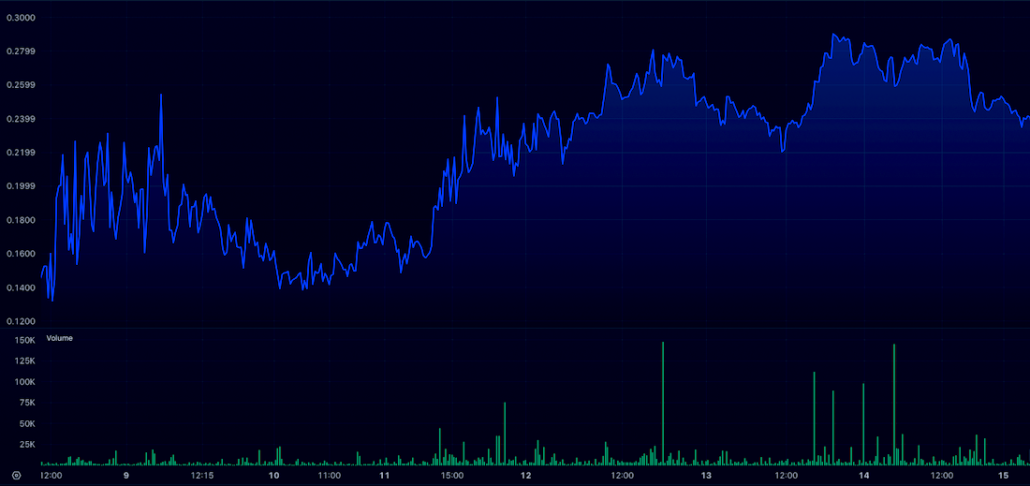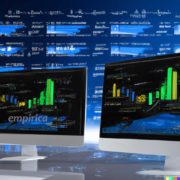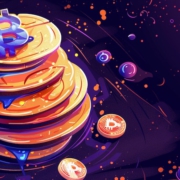Wash trading crypto – are exchanges and token issuers cheating their investors?
June 27, 2024
How often do you find yourself buying a product based on the rankings and reviews of its users? What if I told you that 80% of these opinions might be faked to boost the perceived popularity and quality of a product? E-commerce platforms often rank products based on reviews and ratings, similar to how exchanges rank cryptocurrencies based on trading volumes. Fake reviews can manipulate these rankings, making a product appear as a top seller. Wash trading manipulates exchange rankings, making certain cryptocurrencies appear more active and valuable.
What is crypto wash trading and how does it influence the market?
Wash traders use algorithms to simultaneously buy and sell the same asset to create artificial trading volume. This, in turn, can lead to artificial price changes, which do not reflect the actual supply and demand dynamics.
Coming back to our online shopping. What happens when buyers discover that reviews have been faked? They lose trust in the platform and the products it offers, right? Similarly, when investors learn about wash trading, they lose confidence in the exchange and tokens listed there. Both practices are deceptive, aiming to manipulate perceptions and rankings for short-term gains while risking long-term trust and integrity.
Wash trading, or more accurately, cheating investors, creates a false sense of liquidity and demand. This practice is carried out by both profit-driven exchanges and some token issuers through their market makers, which we call “market fakers”. They use algorithms to pump volumes. Unfortunately, this casts shadows over the whole industry.
Does wash trading affect prices?
Crypto wash trading involves creating fake trading volumes, giving the impression of high market activity for various reasons:
- to attract new investors
- to artificially influence the market price of an asset
- to meet the requirements of some exchanges that demand a certain level of trading volume on other platforms to list a token.
As you can see, one reason for wash trading is inflating the asset price.
Is wash trading legal in crypto?
Crypto wash trading is a form of market manipulation that is illegal in traditional markets. However, due to the lack of effective regulation, it occurs on a large scale in crypto.
According to the Report by Lin William Cong, Xi Li, Ke Tang, and Yang Yang*, “wash trading remains a critical issue in cryptocurrency markets. It is a common occurrence on unregulated exchanges, with an estimated average of 70% of reported volume being fake. In some exchanges, this figure exceeds 80%. The researchers reveal the dark side of crypto exchanges, exposing their dishonest practices to boost rankings and attract more investors.”
Empirica-l evidence
The impact of wash trading on the market is significant. Detection methods include identifying suspicious patterns like repeated buy and sell orders of the same size and frequency. The best-known methods are: Benford’s Law, Trade Size Clustering, Power Law Distribution.
At Empirica, we always empirically test a theory to understand how crypto markets work. We use our systems to detect anomalies, estimate wash trading, and measure the scale of it. We developed an algorithm to detect and filter out wash trades in real-time market data. The algorithm was tested on exchanges with a rapidly growing transaction volume, analyzing data from the BTC markets.
The standard pattern for wash trading usually refers to large amounts of small transactions in the middle of the spread. However, our algorithm also detected such patterns, where most transactions larger than 1 BTC were initiated by orders placed very close to the mid-price of the order book and executed immediately. In contrast, non-wash trades had relatively larger volumes only sporadically, with most transactions not exceeding 0.1 BTC. The final data revealed that 84.89% of the reported volume during the study period came from wash trades.
What is an example of a wash trade?
Many of you are probably wondering how to detect wash trading in crypto. Today, artificially created volumes can often be detected without complex algorithms. You can quickly discern a token’s true condition by observing market metrics. Unfair practices are easy to recognize. When there is low or no market depth (+-2% depth) with a high trading volume, there is an increased probability that the reported volume may not reflect actual trading activity.
How do you identify fake volume?
If you look at the example token markets (the table below), you will easily recognize that a low liquidity position like $187, for example, cannot make a volume of more than $14 million in 24 hours! Traders also look for this kind of pattern. When they see this, not only will they not invest in the token, but they will also lose confidence in the project and not come back again!
Despite this clear evidence, wash trading remains common due to pressure from exchanges and the desire for rapid growth. However, our experience shows that focusing on the project and its community and investing in marketing and development, can also result in sustainable, organic growth. The difference is huge – long-term investment brings lasting profits, whereas succumbing to short-term pressures can only yield short-term results but ruin the reputation of the project and lose the trust of its investors.
“How much for wash trading?”
This is a question we hear every week from token issuers who are looking for this type of service. The goal of market making is to provide liquidity, not, as some believe, to increase volumes. Providing liquidity influences investor activity and token growth, but this should be done organically.
Empirica statement
Short-term manipulation leads to long-term consequences. We help tokens increase their volumes organically with great results. We are committed to fair and ethical market making. We might leave some deals on the table, but we fully believe that is an investment that will pay off. Our customers confirm this. They have achieved strong volume growth by investing in product development and marketing activities.
“We’re thankful for Empirica’s support for Aleph Zero — and are very much appreciative of their client-centric approach, proactive suggestions, and high ethical standards.” Antoni Zolciak, Co-founder of Aleph Zero.
Resources:
* Cong, Lin and Li, Xi and Tang, Ke and Yang, Yang, Crypto Wash Trading (December 2022). NBER Working Paper No. w30783, Available at SSRN: https://ssrn.com/abstract=4312030, Last revised: 14 Apr 2023
“Systematic tests exploiting robust statistical and behavioral patterns in trading to detect fake transactions on 29 cryptocurrency exchanges. Regulated exchanges feature patterns consistently observed in financial markets and nature; abnormal first-significant-digit distributions, size rounding, and transaction tail distributions on unregulated exchanges reveal rampant manipulations unlikely driven by strategy or exchange heterogeneity. Quantifying the wash trading on each unregulated exchange, which averaged over 70% of the reported volume (trillions of dollars annually). Among 29 exchanges studied (including 3 regulated, 10 unregulated Tier-1, and 16 unregulated Tier-2) the data shows: Unregulated exchanges more than five years old on average wash trade 48.12% of the reported volume, compared to 82.89% for those less than five years old. Those with more than ten thousand unique users wash trade 61.32% of the reported volume, compared to 83.86% for those with fewer users. Younger exchanges with a smaller user base are more likely to use unethical methods to hop on the departing train with potential investors.”
Thanks for reading! If you found this interesting, please share the article on Twitter and let your friends know about the importance of healthy organic growth. See you in the next article!
Anna Waszak
Crypto Researcher at Empirica
With over 20 years of experience researching and writing about IT technologies, I value simplicity and aim to explain complex concepts in a way that sparks the imagination. I craft my crypto articles to be easy to understand while preserving their substantive content.
How does Empirica help token projects in organic growth?
Our algorithms ensure market depth, stabilize the price and offer investors constantly good trading conditions, which, as a consequence, contributes to an increase in organic volumes. There is no need for shortcut practices. For token issuers, on most of the markets we quickly achieve 30-40% of market share. Check out how we support listings and ensure liquidity on CEX and DEX platforms.
Building liquid and healthy markets
Learn about the importance of choosing the right market maker, about cooperation models, and the impact of market making on liquidity and volatility reduction. Piotr covers the basics of crypto market making, why it’s crucial for a healthy growth. Watch now for valuable insights and examples from our projects.
Insights from our example projects
One of our clients is a mature token project with a global recognition listed on over 30 markets with significant trading volumes. It has a large and active community. The price increased up to 250% within the first week after listing, and remains stable after the first month. Since the listing, volumes have begun to rise significantly, reflecting a healthy market and good trading conditions (see the Price and Volume chart below).
When we started our cooperation, the token had a pool with almost no volumes there. Prior to our entry into this market, price volatility reached 165% and there was almost no depth! Our algorithms stabilized the price (with a maximum volatility of 9%) and offered investors constantly good trading conditions which, as a consequence, contributed to an increase in organic volumes.









 Empirica. Generated with AI
Empirica. Generated with AI

